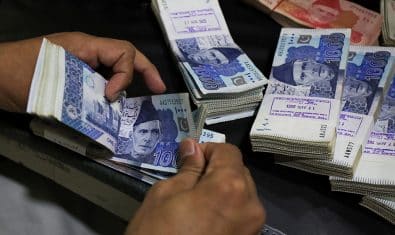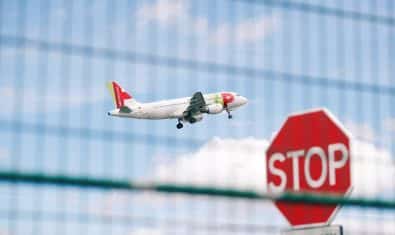Pakistan’s exports are expected to register over ten percent growth and reach around $31 billion in the current fiscal year 2023-24, compared to $27.735 billion in the last fiscal year 2022-23.
Sources in the Pakistan Bureau of Statistics (PBS) told this correspondent that the country’s exports were $4.434 billion during the first two months (July-August) of the current fiscal year and registered -6.32 percent growth when compared to $4.733 billion, however, exports turned into positive trajectory after that from September 2023.
The country’s exports increased by 10.65 percent ($2.702 billion) to $28.070 billion during the first eleven months (July-May) of the current fiscal year 2023-24 compared to $25.368 billion in the corresponding period of the last fiscal year.
Exports were $2.068 billion in July, $2.366 billion in August, $2.476 billion in September, $2.690 billion in October, $2.573 billion in November, $2.822 billion in December, $2.792 billion in January, $2.583 billion in February, $2.572 billion in March, $2.352 billion in April, $2.792 billion in May and expected to remain over $2.8 billion in June 2024.
On the other hand, imports declined by 2.37 percent to $49.802 billion during the first eleven months of the current fiscal year as compared with $51.010 billion in the same period of the last fiscal year. The increase in exports and decline in imports resulted in a narrowing trade deficit by 15.25 percent in the first eleven months (July-May) of 2023-24 as it stood at $21.732 billion compared to $25.642 billion during the same period of last fiscal year.
Officials said that giving extensive focus to old markets including China, and Saudi Arabia, and searching for new markets like African countries helped in the turnaround of exports and is likely to produce more good results in the coming months.
Food group exports stood at $6.228 billion during the first ten months of the current fiscal year compared to $4.277 billion during the same period of last fiscal year and registered 45.61 growth. Rice exports registered 80.13 percent growth, leguminous vegetables (pulses) 409.33 percent, oil seeds, nuts, and kernals 115.43 percent, and vegetables 41.50 percent growth. In the textile group raw cotton had 319.9 percent growth.
Top Export Destinations
The United States (US) remained the top export destination of Pakistani products during the first ten months of the current financial year 2023-24, followed by China and the United Kingdom (UK), as per the State Bank of Pakistan (SBP) data.
Total exports to the US during July-April 2023-24 were recorded at US 4,497.658 million against the exports of $4,993.310 million during July-April 2022-23, showing a decline of 9.92 percent. This was followed by China, wherein Pakistan exported goods worth $2,341.089 million against the exports of $1,700.303 million last year, showing an increase of 37.68 percent.
UK was the third top export destination, where Pakistan exported products worth US $1,683.655 million during the months under review against the exports of US $1,645.754 million. Among other countries, Pakistani exports to UAE stood at $1,637.779 million against $1,207.041 million last year, showing an increase of 35.68 percent while the exports to Germany were recorded at $1,235.348 million against US $1,366.321 million last year.
During July-April, the exports to Holland were recorded at $1,143.879 million against $1,210.378 million whereas the exports to Italy stood at $918.011 million against $951.240 million. Pakistan’s exports to Saudi Arabia were recorded at $579.425 million during the current year compared to US $405.436 million last year whereas the exports to Turkiye stood at US $281.937 million against US $269.833 million.
Talking to this correspondent representatives of different sectors said that amid high discount rate and energy prices, Pakistan’s strategy to enhance non-traditional exports to China and GCC has yielded results. “We are proud of our business who grabbed the opportunities in these difficult times. We have enhanced around 37 percent exports to China and increased by 38 percent exports to GCC year-on-year during this period,” they added.
Exporters said that Pakistan and China increased focus on economic ties, with a focus on improving the balance of trade between the two nations. They further underscored the importance of private sector collaboration, particularly Small and Medium Enterprises (SMEs), which could bring prosperity to Pakistan.
Chairman of Pakistan Apparels Forum Javed Balwani said that the focus on non-textile items and new markets resulted in increasing exports of the country. Agriculture and food items including rice helped in boosting exports, said Balvani, adding that agriculture requires comparatively less cost in terms of energy as most of the tube wells are being run on solar. He further said the entry into new markets and focus on old also helped in boosting the country’s exports.
Former Chairman of Pakistan Readymade Garments Manufacturers & Exporters Association, Ijaz Khokhar said that prices in the international market went down and could be termed as one of the reasons behind the increase in exports. He further said that quantity increased and prices went down.





























Rice export registered major increase by 80 percent. It was due to ban by Indian rice imposed due to election. Is this export figure sustainable?
51 billion import bill and 31 billion exports. Gap is still quite big.